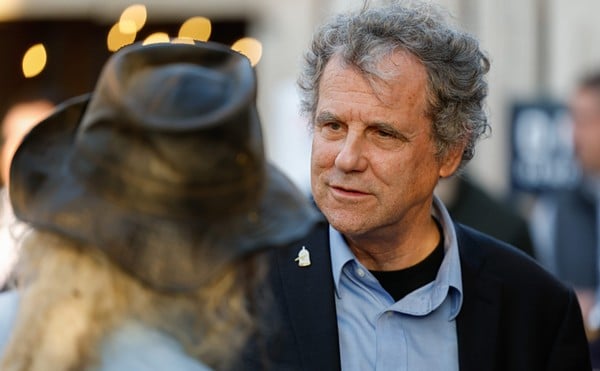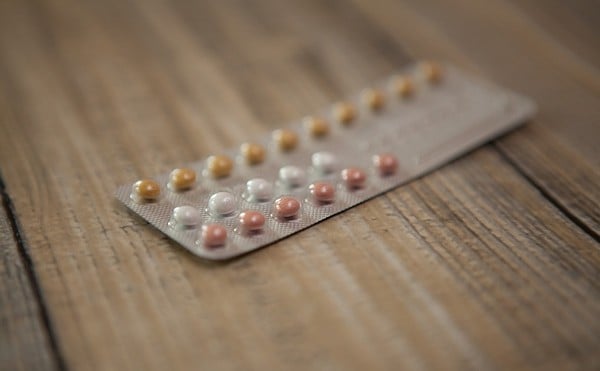|
EDITOR'S NOTE: A few weeks ago I came across a strange locked box in the basement of our building downtown where we keep back issues and old files. It was labeled "CityBeat 25th Anniversary Time Capsule," and inside, believe it or not, was a CityBeat published on Nov. 13, 2019, celebrating the paper's 25th anniversary. Seriously!
So I thumb through the issue and come across an article written by me about how Greater Cincinnati is among the leading American arts cities. After reading it, I have two immediate thoughts: I become a much better writer during the next 12 years, and this article will be a perfect complement to CityBeat's annual State of the Arts issue this year. Think of it as "State of the Arts Yet to Be."
So here's my future article reprinted in its entirety. I'm sure I'll approve of its use later.
It's hard to believe now, but not that long ago Cincinnati wasn't considered in the same league as New York City, Chicago, Philadelphia, Seattle and Minneapolis as the premier U.S. arts cities. If it hadn't been for the foresight of our political and business leaders and enthusiastic public backing, we might still be known only for chili, cornhole and the late Pete Rose.
Things have been going so well in the local arts scene for so long that it's easy to forget the dark days just a decade ago. This community came very close to missing out on that huge leap into the big time — and considering the incredible economic spin-off the region has enjoyed from our arts renaissance, we should all thank our lucky stars and Jack Rouse that we came to our senses between 2007 and 2011.
There were several early attempts at a master plan for the arts, but none were able to get beyond the squabbles between city and county government and between big and small arts institutions.
I still think CityBeat's 2000 cover story, about "The T" arts district, modeled after Philadelphia's now famous Avenue of the Arts, first got local folks thinking of a coordinated effort among building projects, arts needs and public transit, but we never really got the credit. Just don't tell me it's a coincidence that downtown's first modern streetcar line runs along the top of our "T," 12th Street.
Anyway, not many people remember that it was the Greater Cincinnati Foundation that got the ball rolling toward that final breakthrough for the arts. In early 2007, GCF released its "Arts & Culture Business Plan," showing how Cincinnati's total financial support for the arts lagged behind peer cities like Minneapolis, St. Louis, Cleveland, Kansas City and Indianapolis.
(It's funny to think that only 12 years ago we considered St. Louis, Indianapolis, Kansas City, Columbus and Louisville "peer" cities. What were we thinking? Why didn't we start to compare ourselves "up" to Chicago and New York sooner than we finally did?)
Working behind the scenes throughout 2007, GCF, the Fine Arts Fund and key business leaders considered all kinds of public funding options for boosting the arts. Ultimately, they decided to try a capital arts pilot fund to be paid via an increased admissions tax on all live sports, music and arts events.
It was a smart move, of course, because the extra dollars came from those who were using the very facilities the fund supported instead of the controversial sales tax concept in which everyone paid for things like stadiums that only a few actually used.
The key decision, we now know, was getting Covington and Newport to join the city of Cincinnati in the pilot program. Back then the Fine Arts Fund was already supporting the arts in Northern Kentucky and arts audiences were crossing the river in both directions, so it made sense to make the arts the guinea pig for regional government cooperation.
Not that there weren't huge hurdles. CityBeat wrote lots of stories in during the period about how certain politicians and corporate types were trying to scuttle the cooperative plan and downplay the arts' importance in rejuvenating the region's economy. Remember that editorial I wrote, "Give Us 'Arts Across Borders,' or Give Us Death"? Look it up in our archives.
One of the most important meetings in this region's history occurred in March 2008, when, in essence, the Cincinnati Cultural Trust was born. It involved some of the biggest names going (Ohio Gov. David Pepper, then a Hamilton County commissioner; U.S. Sen. Mark Mallory, then mayor of Cincinnati; U.S. Rep. Roxanne Qualls, then a city councilwoman; Mayor Chris Bortz, then a city councilman; U.S. Rep. Butch Callery, then mayor of Covington; Jim Tarbell, who'd left city council for the University of Cincinnati; and Cultural Trust President Jack Rouse, then running what was called the Port Authority) and others whose roles have faded in the memory (arts patron Patricia Corbett, financier Carl Lindner and developer Bill Butler) but whose names remain on lots of local buildings.
Leaders in Cincinnati, Covington and Newport agreed to increase their admissions taxes at the same time, with the goal of funding two important capital projects: renovation of the Emery Theatre in Over-the-Rhine and construction of the Bunning Arts Center in Covington. Both projects cost about the same ($25 million in 2008 dollars), and the pooled funds and parallel development got everyone used to cooperating instead of competing.
The region would never go back to the old ways. Thank God.
Even I forget sometimes that it was Cincinnati Symphony Orchestra representatives who offered the breakthrough moment in that 2008 meeting. If they hadn't agreed to move the CSO to a renovated Emery Theatre instead of downsizing Music Hall, which was their original plan, we might not be celebrating Cincinnati's glory days here in 2019.
The Emery move made sense in every way.
The Symphony and Pops crowds were getting swallowed up in cavernous Music Hall, so much so that the CSO actually drew up plans to decrease seating there. That would have placed a hardship on Music Hall's other tenants, Cincinnati Opera and the May Festival, who would have had to add performances just to attract the same audience numbers.
The Emery had been built for the CSO in 1911 and, even though it fell into disrepair by the turn of the century, remained an acoustically excellent hall. All it needed was, well, everything — but the price tag for a full renovation was far less than what a Music Hall overhaul would have required.
The CSO had already been tinkering with using a second stage out at Riverbend, adding the popular 4,000-seat National City Pavilion that same year. So deciding to move the orchestras to Emery Theatre, in retrospect at least, was a natural step.
No one could have foreseen the excitement and energy those decisions created. Within a few months, construction was underway on an expanded Washington Park across from Music Hall and on the School for Creative and Performing Arts on the park's southern end. The Art Academy of Cincinnati began work on its new building next door. And pavement throughout downtown was dug up for the first streetcar tracks.
(Remember when the area had just one streetcar line? Hell, remember when we didn't have any streetcar lines?)
Once the public financing plan was set in stone and started generating money, the private sector went nuts.
Towne Properties took over the Fifth and Race land in mid-2008 and announced the Lindner Theater Center, with three spaces for the Playhouse (Stern Theatre, Rouse Shelterhouse and BuzzSpot, the black box theater) and one larger space for Children's Theatre of Cincinnati (Louiso Hall) and outside uses. The condos and office space on top were popular from the very beginning and obviously remain so today.
Cranes started popping up out of the ground along the under-construction Green Line streetcar route, especially in Over-the-Rhine. The energy around the Art Academy, Ensemble Theatre, Know Theatre, SCPA, Music Hall, Washington Park and the rehab work at the Emery was contagious, leading to, well, you know what happened.
Back downtown, condo developers bought out the Masonic Lodge and tore down the Taft Theater in 2009. Taft Square rose during the next few years, adding to that downtown corner's reputation as the city's best upscale urban living option.
By that time, of course, the full-blown Cincinnati Cultural Trust had come to life. The pilot program for the admissions taxes was such a success — even though neither the Emery nor the Bunning Center were finished yet — that a larger vision was pursued.
It was a daring concept, but there was nothing to lose. National magazines and TV shows had started to tout Cincinnati as a "hot" city that had its act together, and even the early skeptics acknowledged that the arts building projects were fanning the flames.
And so the Cultural Trust was formed, with Rouse as its head. The "crazy" funding plan was put on the table: an eight-county property tax levy to fund capital arts projects. The successful Fine Arts Fund was wisely allowed to continue raising operational funding for local arts organizations.
Non-arts institutions like the Cincinnati Zoo, Cincinnati Museum Center and Newport Aquarium (which had changed to nonprofit status) were brought under the Cultural Trust umbrella, but not without controversy. But once the zoo and the Museum Center agreed to give up their dedicated Hamilton County tax levies and share public funds with the entire regional roster, the necessary united front was in place.
The tax plan was put on the ballot in 2010, and, as we all know, it failed narrowly.
When an admissions tax was added to the plan to cover events in all eight counties — moving some of the funding burden from property owners to arts, culture, museum and sports users — backers sought passage in November 2011.
And when the Cincinnati Symphony Orchestra opened its 2011-12 season that September in the Emery Theatre, the centennial of the hall's debut, the goodwill was overwhelming. The tax plan passed easily two months later.
Rouse and his Cultural Trust board pulled all the right levers after that. Events that used to play at the Taft Theatre moved to Music Hall, which saw increased dates from the Opera and a new fall program from the May Festival. The Symphony and the Pops, as we know, pop back to Music Hall for special concerts, much as Cincinnati Ballet continues to do with The Nutcracker.
The Cultural Trust coordinated booking contracts with the Cincinnati Arts Association and YahooDo, which bought out Clear Channel's Live Nation concert business, so all of the area's performance houses were filled as often as possible: the Aronoff Center's Jarson-Kaplan (440 seats), The Carnegie's Budig Theater (465), Memorial Hall (660), Louiso Hall (1,000), Bunning Center's Corporex Hall (1,250), Emery Theatre (1,700), Blue Ash Center for the Arts (2,000), the Aronoff Center's Procter & Gamble Hall (2,800) and Music Hall (3,400).
The second streetcar line connected Clifton and the UC campus to downtown, bringing all those students down to arts activities and involving CCM in the established arts insitutions like never imagined before. Ditto for the third line, which connected the first two with Newport and Covington.
New capital funds helped lots of other institutions complete their building projects: the Cincinnati Art Museum's full renovation, the Museum Center's garage and housing development and the new Duncanson African-American Arts Consortium next to Newport on the Levee.
Just as we're known as the metro area with the largest private fund-raising drive for the arts, the Fine Arts Fund, Cincinnati is now considered as "best practice" for how metro areas fund and coordinate capital arts projects with public money. It's a story we should never get tired of telling.
When things are going this well, there's no reason to quibble over who gets credit for Cincinnati's rebirth. The arts have done us all proud over the past 25 years, particularly in the past decade.
Good thing everyone took CityBeat's 2007 State of the Arts issue to heart. ©





